| Listing 1 - 10 of 188 | << page >> |
Sort by
|
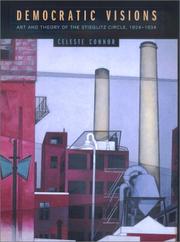
ISBN: 0520213548 Year: 2001 Publisher: Berkeley (Calif.) : University of California press,
Abstract | Keywords | Export | Availability | Bookmark
 Loading...
Loading...Choose an application
- Reference Manager
- EndNote
- RefWorks (Direct export to RefWorks)
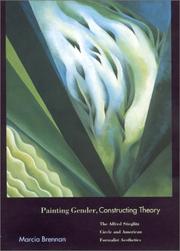
ISBN: 0262024888 Year: 2001 Publisher: Cambridge, Mass. MIT
Abstract | Keywords | Export | Availability | Bookmark
 Loading...
Loading...Choose an application
- Reference Manager
- EndNote
- RefWorks (Direct export to RefWorks)
"In Painting Gender, Constructing Theory, Marcia Brennan examines how Stieglitz and the critics drew on early twentieth-century discourses on sex and the psyche, particularly the theories of Sigmund Freud and Havelock Ellis, to characterize the artworks of the Stieglitz circle. Critics routinely described the often highly abstracted paintings of Georgia O'Keeffe, Arthur Dove, John Marin, Marsden Hartley, and Charles Demuth as transparent displays of the most intimate aspects of the self, taking both subject matter and painterly form to be guided by the artist's own gendered and psychic energies." "Focusing on the key historical criticism and art-works, Brennan shows how the identities of all five Stieglitz circle artists were presented in terms of the masculinity and femininity, and the heterosexuality and homosexuality, thought to be embedded in their work. Brennan also discusses Stieglitz's relation to competing artistic and critical movements, including Thomas Hart Benton's regionalist art and Clement Greenberg's reformulation of formalism."--Jacket.
Aesthetics --- Stieglitz, Alfred --- Gender identity in art. --- Modernism (Art) --- Stieglitz Circle (Group of artists).
Book
ISBN: 081957242X 9780819572424 9780819568885 0819568880 Year: 2008 Publisher: Middletown, Conn. Wesleyan University Press
Abstract | Keywords | Export | Availability | Bookmark
 Loading...
Loading...Choose an application
- Reference Manager
- EndNote
- RefWorks (Direct export to RefWorks)
The state of performance art in the 80s and 90s, documented by the form's leading critic.
Arts, American --- Performance art --- Arts, Modern --- Algonquin Round Table --- Catharctic Circle (Group of artists)
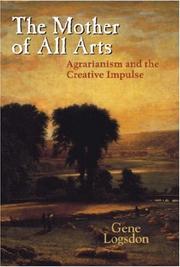
ISBN: 0813134730 1283233150 9786613233158 0813172543 9780813172545 9781283233156 0813124433 9780813124438 9780813134734 6613233153 Year: 2007 Publisher: Lexington University Press of Kentucky
Abstract | Keywords | Export | Availability | Bookmark
 Loading...
Loading...Choose an application
- Reference Manager
- EndNote
- RefWorks (Direct export to RefWorks)
When Logsdon realised that he experienced the same creative joy from farming as he did for writing, he suspected that agriculture itself was a form of art. Thus began his search for the origins of the artistic impulse in the agrarian lifestyle. This book is the culmination of his journey, his friendships with farmers and artists driven by the urge to create.
Arts, American --- Agriculture and the arts. --- Arts, Modern --- Algonquin Round Table --- Catharctic Circle (Group of artists) --- Arts and agriculture --- Arts
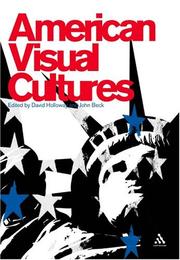
ISBN: 0826464858 082646484X Year: 2005 Publisher: London Continuum
Abstract | Keywords | Export | Availability | Bookmark
 Loading...
Loading...Choose an application
- Reference Manager
- EndNote
- RefWorks (Direct export to RefWorks)
Philosophy and psychology of culture --- Arts, American --- Arts and society --- Arts, Modern --- Algonquin Round Table --- Catharctic Circle (Group of artists)
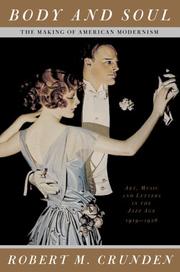
ISBN: 0465014852 0465014844 9780465014859 Year: 2000 Publisher: Perseus books,
Abstract | Keywords | Export | Availability | Bookmark
 Loading...
Loading...Choose an application
- Reference Manager
- EndNote
- RefWorks (Direct export to RefWorks)
Arts, American --- Modernism (Art) --- Arts, Modern --- Algonquin Round Table --- Catharctic Circle (Group of artists) --- MODERN ARTS --- MODERNISME (ART) --- 20th CENTURY --- ETATS-UNIS
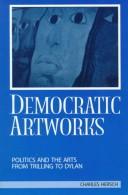
ISBN: 0585091951 9780585091952 0791438015 0791438023 1438406584 Year: 1998 Publisher: Albany, NY : State University of New York Press,
Abstract | Keywords | Export | Availability | Bookmark
 Loading...
Loading...Choose an application
- Reference Manager
- EndNote
- RefWorks (Direct export to RefWorks)
Arts --- Arts, Modern --- Algonquin Round Table --- Catharctic Circle (Group of artists) --- Arts, Fine --- Arts, Occidental --- Arts, Western --- Fine arts --- Humanities --- Political aspects --- Arts, American --- Arts, Primitive
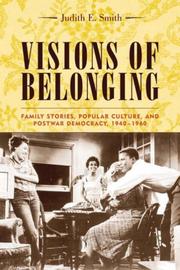
ISBN: 0231121709 0231121717 1322353131 023150926X Year: 2004 Publisher: New York : Columbia University Press,
Abstract | Keywords | Export | Availability | Bookmark
 Loading...
Loading...Choose an application
- Reference Manager
- EndNote
- RefWorks (Direct export to RefWorks)
Visions of Belonging explores how beloved and still-remembered family stories-A Tree Grows in Brooklyn, I Remember Mama, Gentleman's Agreement, Death of a Salesman, Marty, and A Raisin in the Sun-entered the popular imagination and shaped collective dreams in the postwar years and into the 1950's. These stories helped define widely shared conceptions of who counted as representative Americans and who could be recognized as belonging. The book listens in as white and black authors and directors, readers and viewers reveal divergent, emotionally textured, and politically charged social visions. Their diverse perspectives provide a point of entry into an extraordinary time when the possibilities for social transformation seemed boundless. But changes were also fiercely contested, especially as the war's culture of unity receded in the resurgence of cold war anticommunism, and demands for racial equality were met with intensifying white resistance. Judith E. Smith traces the cultural trajectory of these family stories, as they circulated widely in bestselling paperbacks, hit movies, and popular drama on stage, radio, and television. Visions of Belonging provides unusually close access to a vibrant conversation among white and black Americans about the boundaries between public life and family matters and the meanings of race and ethnicity. Would the new appearance of white working class ethnic characters expand Americans' understanding of democracy? Would these stories challenge the color line? How could these stories simultaneously show that black families belonged to the larger "family" of the nation while also representing the forms of danger and discriminations that excluded them from full citizenship? In the 1940's, war-driven challenges to racial and ethnic borderlines encouraged hesitant trespass against older notions of "normal." But by the end of the 1950's, the cold war cultural atmosphere discouraged probing of racial and social inequality and ultimately turned family stories into a comforting retreat from politics. The book crosses disciplinary boundaries, suggesting a novel method for cultural history by probing the social history of literary, dramatic, and cinematic texts. Smith's innovative use of archival research sets authorial intent next to audience reception to show how both contribute to shaping the contested meanings of American belonging.
Arts, American --- Families --- Popular culture --- Arts, Modern --- Algonquin Round Table --- Catharctic Circle (Group of artists) --- History --- United States --- Social life and customs
Book
ISBN: 9781433153907 1433153904 Year: 2020 Publisher: New York Lang
Abstract | Keywords | Export | Availability | Bookmark
 Loading...
Loading...Choose an application
- Reference Manager
- EndNote
- RefWorks (Direct export to RefWorks)
This important interdisciplinary book is a unique and timely contribution to the field of women in the arts. Each chapter is devoted to a single artist and a single ground-breaking work that altered the course of its art form in a full array of genres, including dance, music, installation, photography, architecture, poetry, literature, theater, film, performance art, and popular culture. These discussions are preceded by a comprehensive introduction to art by women over the past century that sets the artists who follow in a context that insightfully illuminates their struggles, their achievements, and their places in history at a critical moment in the contemporary world. In this second edition, the authors have made a significant update with six new chapters, new photos, and a revised introduction. The new chapters take as their subjects the contributions of Yoko Ono, Crystal Pite, Caroline Shaw, Beyoncé, Kara Walker, and Diane Paulus. Each of the new chapters represents an artist or a category of art that has grown in prominence or engaged a significant redefinition in the contemporary world that was not addressed in the original edition of the book. Updating this material re-establishes the book's priority and relevance, especially in its expansion of representation of artists of color and artists in popular culture, and reinforces its appeal not only as a popular read, but as a classroom textbook or resource at the university level.
Feminism and the arts --- Arts, American --- Women artists --- Psychology. --- Psychology --- Arts, Modern --- Algonquin Round Table --- Catharctic Circle (Group of artists) --- Arts and feminism --- Arts
Book
ISBN: 0436200821 Year: 1977 Publisher: London Secker and Warburg
Abstract | Keywords | Export | Availability | Bookmark
 Loading...
Loading...Choose an application
- Reference Manager
- EndNote
- RefWorks (Direct export to RefWorks)
Stieglitz Circle (Group of artists) --- Avant-garde (Aesthetics) --- Art, American --- Cercle de Stieglitz (Groupe d'artistes) --- Avant-garde (Esthétique) --- Art américain --- Stieglitz, Alfred, --- Art patronage. --- Stieglitz Circle (Group of artists). --- CDL --- 77.071 STIEGLITZ --- Avant-garde (Esthétique) --- Art américain --- Stieglitz Group (Group of artists) --- Art, Modern --- Aesthetics --- Modernism (Art) --- Chicago Imagists (Group of artists) --- Figuration libre (Group of artists) --- Fort Worth Circle (Group of artists) --- Hairy Who (Group of artists) --- Monster Roster (Group of artists) --- Philadelphia Ten (Group of artists) --- Pictures Generation (Group of artists) --- O'Keeffe, Georgia, --- Stieglitz, Alfred
| Listing 1 - 10 of 188 | << page >> |
Sort by
|

 Search
Search Feedback
Feedback About UniCat
About UniCat  Help
Help News
News